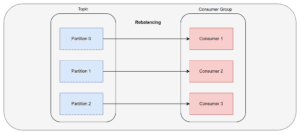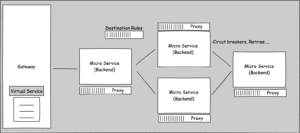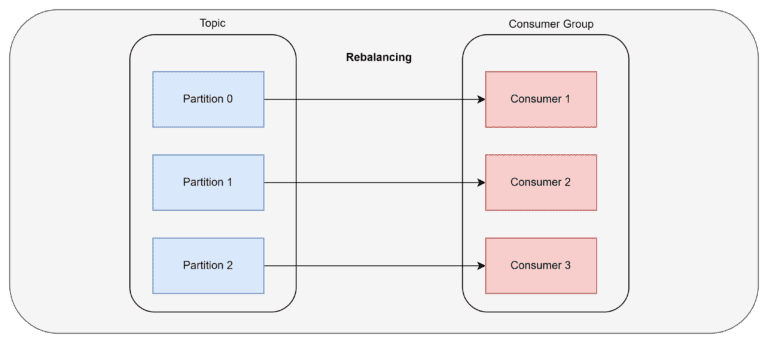Introduction
Setting unique objectives and plans for the IT department is critical for ensuring that technology investments and activities are aligned with an organization’s broader business goals. This alignment increases operational efficiency, resource allocation, and decision-making, leading to increased competitiveness and growth. When information technology is strategically linked with business objectives, it becomes a vital driver of innovation and success, helping a company to stay agile and responsive to changing market conditions while providing value to customers and other stakeholders.
Why IT Objectives and Strategies Matter
IT plays a critical role in today’s enterprises. It helps with operational efficiency, data management, consumer engagement, and innovation. Aligning IT goals with overall business goals is crucial because it guarantees that technology investments contribute directly to strategic goals. Among the benefits of clearly stated IT objectives and strategies are Efficiency such as streamlining processes and automating tasks which ultimately leads to cost savings and improved productivity. Competitive Advantage: Aligned IT, drives innovation, enable organizations to stay ahead in rapidly evolving markets. Resource Optimization for efficient resource allocation and enhancing ROI. Risk Mitigation: Clear IT objectives enable proactive risk management, protecting the organization from disruptions. IT provides data-driven insights for informed decision-making at all levels and consumer stratification for better customer experiences and engagement, fostering loyalty and growth.
Understanding Organizational Goals
Comprehending the broader organizational goals is critical for IT as it ensures that the IT department’s activities are strategically aligned with the overall mission and vision of the firm. Alignment such as strategic focus, resource allocation, relevance, stakeholder buy-in, measurement and accountability are all important considerations. To achieve alignment, IT objectives should be derived from and complement broader organizational goals. For example, if the organization’s goal is to boost customer satisfaction, IT goals could include improving the user experience of customer-facing systems or introducing more effective CRM technologies. This assures that IT efforts are not just technically solid, but also directed.
Conducting Technology Assessment
A critical part of strategic IT planning is assessing the present state of a company’s IT infrastructure. When determining the scope, decide which aspects of the IT infrastructure will be reviewed. Collect relevant information and documentation about the existing technology infrastructure. Gather relevant information and documentation about the current technology infrastructure. Using performance analysis, evaluate the effectiveness of critical systems and applications. When doing a cybersecurity assessment, evaluate the organization’s cybersecurity posture. Investigate data storage, management and security policies. Identify places where technology might improve productivity and user satisfaction. Using a methodical SWOT analysis, identify the assets and weaknesses of the current technology infrastructure. Identify gaps in the organization’s technology infrastructure that prevent it from meeting its goals and objectives. Prioritize areas for improvement based on the evaluation results. Create a plan of action outlining specific initiatives, deadlines, and accountable persons or teams for fixing identified shortcomings and implementing changes. Due to the dynamic nature of technology, it is critical to examine and update the technology assessment on a regular basis. A comprehensive technology assessment gives a clear understanding of the organization’s technical strengths and limitations, allowing for informed decision-making and strategic planning for IT advancements that support the fulfillment of larger business objectives.
Setting SMART Objectives
SMART is a framework for defining Specific, Measurable, Attainable, Relevant, and Time-bound goals and objectives. This approach guarantees that goals are well-defined, attainable, and have a clear path to completion. Specific: The goal should be clear and unambiguous, with no space for misunderstanding. It answers the questions of what, why, who, where, and how. As an example, Implement a new customer relationship management (CRM) system to improve lead conversion rates and streamline the sales process. Measurable: The goal should include a measurable metric for tracking progress and determining whether it is reached. It is a clear indication of success. As an example, Over the next six months, reduce network downtime by 20% through proactive infrastructure maintenance and enhancements. Attainable: The goal should be attainable. It should stretch the team’s talents while staying achievable. For example Increase the number of resolved IT support tickets by 15% over the next quarter by hiring extra support staff and implementing a ticket monitoring system. Relevance: The target should be in line with the organization’s broader goals and mission. It should be relevant to the department or group in charge of carrying it out. For example Implement multi-factor authentication (MFA) for all user accounts to meet the organization’s commitment to customer data security. Time-bound: The goal should be time-bound, with a definite completion timeline or deadline. This creates a sense of urgency and makes planning and progress tracking easier. For example migrate all on-premises servers to the cloud before the end of the fiscal year to improve scalability and decrease operational costs. These SMART IT goals are well-defined, measurable, attainable, relevant to the needs of the firm, and have specific completion deadlines. This helps them to effectively steer IT initiatives and assure their alignment with the larger goals of the firm.
Developing IT Strategies
IT strategies are detailed plans and road maps that firms use to connect their information technology resources with their business goals and objectives. They must optimize IT spending, improve operational efficiency, and sustain competitiveness in a rapidly changing technological landscape. Commonplace techniques include, for example, Cybersecurity Enhancements through firewalls, encryption, and employee education, this strategy focuses on protecting digital assets and data from cyber threats. Digital Transformation strategy aims to modernize processes and user experiences by leveraging emerging technologies such as AI, IoT, and data analytics. Cloud Migration entails moving IT infrastructure and applications to the cloud to improve scalability, flexibility, and cost-effectiveness while reducing on-premises hardware maintenance to name few.
Resource Allocation
Allocating resources for IT strategies involves budget allocation for hardware, software, training, and cybersecurity measures. Staff allocation may includes recruiting, training, and task assignment. Technology allocation by implementing the relevant tools and platforms to effectively execute the strategy. Adequate resources are critical for a successful deployment of systems as they allow organizations to accomplish their IT objectives and changing needs of the businesses, and to ultimately drive business growth while avoiding risks and interruptions.
Risk Assessment and Mitigation
Identifying possible risks and impediments in IT projects is critical because it allows organizations to address issues before they disrupt projects, cause cost overruns, or damage security. To create contingency plans and risk mitigation methods, follow these steps. Do risk assessment by Identifying and assessing potential hazards, taking into account their impact and likelihood which can be technical, operational, or strategic in nature. Craft alternative strategies to make detailed contingency plans indicating precise actions to be taken if dangers arise, also assign responsibilities, set deadlines, and assign resources. Perform risk mitigation to lower the likelihood and impact of recognized risks by implementing proactive risk mitigation measures such as routine monitoring, early warning systems, and quality assurance procedures. Review and adjust these plans on a regular basis to stay ahead of evolving threats and impediments.
Communication and Collaboration
Effective communication and engagement with stakeholders are necessary for successful IT alignment because they promote common understanding, buy-in, and support for IT initiatives along with assurance of IT alignment with business objectives. Stakeholders, such as department heads. Listen to them, customize the solutions, and provide regular updates to them. Highlight the strategic benefits, ROI, and risk/opportunity analysis to executives. Identify champions, include them in decision-making, and keep feedback and communication lines open with key players.
Monitoring and Measuring
KPIs and metrics are critical in assessing IT development because they provide objective and quantitative measurements of how well IT activities correspond with business objectives. They enable firms to assess the effectiveness, productivity, and impact of IT investments. Regular evaluation and reporting mechanisms include such as Monitoring KPIs on a regular basis to discover trends, issues, and target deviations. Periodic Reporting such as providing structured reports to stakeholders at regular intervals, such as weekly, monthly, or quarterly. Actionable Insights like presentation of data-driven insights that educate decision-making and allow for the necessary adjustments and additions to IT strategy.
Improvements and Adoption
IT is a dynamic field that is always changing. To thrive, embrace adaptation as a basic talent, keeping openness to new technology and methodologies. Seek out and learn from emerging technology and best practices on a regular basis to stay relevant and excel in a continuously changing landscape.
Conclusion
Aligning technology activities with the aims of a company necessitates the development of clear IT objectives and strategies. It lays out a plan for identifying project priorities, allocating resources efficiently, and tracking progress. To begin adopting these strategies successfully, Determine your organization’s main goals and long-term vision. Define particular IT objectives to meet these goals, taking into mind both short-term and long-term needs. Plan how information technology will help you achieve these goals. In order to retain agility and responsiveness to changing business conditions, involve key stakeholders in assessing and adjusting your IT objectives and plans on a frequent basis.





















